Surprising facts about royal residences - from unexpected décor and secret rooms to interesting guests
With centuries of history and tradition governing their very existences, it's no surprise that the royal residences are almost as fascinating as the family themselves


From Buckingham Palace to Sandringham and Balmoral, the Royal Family have the privilege of calling several places home.
And even though we know there are plenty of weird, fascinating facts about the family themselves, did you know their homes and palaces are almost just as storied and intriguing?
From the treasures kept within to the records held by the palatial residences, take a peek inside the royal residences like never before.
Surprising facts about royal residences
Just two of the royal residences are privately owned

Most of the royal residences - including Buckingham Palace and Windsor Castle - are owned by the Crown Estate, meaning they're funded by British taxpayers.
The only two which aren't are Sandringham in Norfolk and Scotland's Balmoral Castle.
Queen Victoria and Prince Albert paid £32,000 for Balmoral in 1842 (which has been described as roughly £4.9 million today).
As for Sandringham, Queen Victoria bought it for her eldest son, Prince Albert.
Sign up for the woman&home newsletter
Sign up to our free daily email for the latest royal and entertainment news, interesting opinion, expert advice on styling and beauty trends, and no-nonsense guides to the health and wellness questions you want answered.
The price paid for Sandringham, £220,000, per John A Matson’s Sandringham days: the domestic life of the royal family in Norfolk, 1862-1952 was described as "exorbitant" even by royal standards.
A modern equivalent can’t be accurately worked out, but £220,000 in modern figures would be in the tens of millions.
There are a series of secret tunnels below Buckingham Palace

There has long been rumour of a series of connecting tunnels below Buckingham Palace, said to link up the likes of the Houses of Parliament and Clarence House.
And, perhaps inadvertently, Princess Beatrice's husband, Jack Brooksbank might have confirmed their existence.
Talking with the Daily Mail, Jack, who used to live at St James’s Palace with Beatrice, reportedly let slip that there was a tunnel from there to a swanky bar on Little St James’s Street.
"I haven’t used it yet, but I’d love to check it out," said James.
Kensington Palace’s origins aren’t that glamorous

Having played home to the likes of Princess Diana and the then Prince Charles, and later Prince William and Kate Middleton, Kensington Palace is one of the royals' London gems.
However, it only became an official royal residence in 1689, when King William III bought the property because it suited his poor health. As an asthmatic, the quieter area meant there was less of London's fog and other environmental factors which worsened his health.
Windsor Castle is the longest-occupied palace in Europe

The original building of Windsor Castle's vast estate was constructed in the 11th century, after the Norman invasion of England.
Construction started under William the Conqueror, who built it as a fortress, but it has been used as a royal residence since the reign of Henry I, which started in 1100.
It's had one of the most storied legacies, being home to more than 40 other reigning monarchs throughout history.
There’s a private post office at Buckingham Palace

Home not just to the Royal Family, Buckingham Palace boasts a massive workforce of a reported 800 staff.
To keep things ticking, they can access amenities on-site like a special post office. That’s not all - the central London palace also has its own police station, doctor’s surgery and ATM.
The oldest parts of Buckingham Palace are underground

The wine vaults beneath the West Wing are reportedly the oldest part of the palace as they date back to the man who owned the palace to begin with, the Duke of Buckingham.
John Sheffield was the 3rd Earl of Mulgrave and Marquess of Normanby and later made the Duke of Buckingham. His impressive manor house - what we know now as the palace - was originally called Buckingham House.
The art in Windsor Castle rivals that of the greatest museums

Ever wonder why you don't bump into the likes of King Charles or the Princess of Wales at the National Portrait Gallery (their hobbies include loving art, after all)?
Well, aside from the obvious logistics, they might not need to visit museums to see masterpieces.
Historical works by legendary artists including Rubens, Michelangelo, Van Dyck and Rembrandt can all be seen hanging throughout the staterooms, halls and galleries at Windsor Castle.
Buckingham Palace houses the largest private garden in London

Buckingham Palace’s 39-acre garden is London's largest private garden.
The plant life and foliage found throughout this sprawling land includes 325 wild plant species, 30 species of breeding birds, and over 1,000 trees, including 98 plane trees and 85 different species of oak.
Hampton Court Palace wasn't originally intended for the royals

A Grade I listed royal palace in the London Borough of Richmond upon Thames, Hampton Court Palace displays many works of art from the Royal Collection and is used by the likes of Queen Camilla to host her literary festivals.
However, it wasn't originally intended as a royal building. Henry VIII's right-hand man, Thomas Wolsey, commissioned the palace between 1515 and 1521 to congratulate himself on becoming a cardinal.
Many historians and scholars point out that Henry VIII's ego was threatened when news of this majestic building reached his ears, with some saying it outshone his own palaces. Knowing his head might have been at stake - quite literally, with Henry VIII - Wolsey presented the palace as a 'surprise' gift.
Buckingham Palace has endured a lot

During the Second World War, Buckingham Palace was hit by nine direct bombs.
The Royal Chapel, inner quadrangle, Palace gates, and the Victoria Memorial were all hit.
While it was a tough time, it was the Queen Mother's humour and resolve that kept spirits high in London. Proving how tough she was, she reportedly quipped "I am glad we have been bombed. Now we can look the East End in the eye."
You can find the oldest working kitchen in the UK at Windsor Castle

Dubbed the Great Kitchen, construction for the Windsor Castle kitchens began during the reign of Edward III in the 14th century, meaning they have been in use for over 750 years.
When the castle opens to the public, fans have been able to take The Great Kitchen Tour in the past.
Buckingham Palace has had a surprising number of break ins

Buckingham Palace has served as the official London residence of the UK's sovereigns since 1837 and also serves as the administrative headquarters of the Monarch. So you think it'd be a bit more secure than it actually is.
The palace has actually had a number of break-ins and close calls. The most famous break-in was in 1982, when Michael Fagan broke in and even managed to get inside the Queen’s bedroom – and yes, she was in!
There was another break-in in 2003 when reporters were able to get photos of the room President George Bush was staying in during his visit.
Like chimneys? Go to Hampton Court Palace

Hampton Court Palace has a rather niche, but still impressive, record - it boasts the largest collection of decorative chimneys in England, with 241 unique chimney stacks.
Guests might have encountered some blushes over the years

In her book, Speaking For Myself, Cherie Blair revealed what guests could expect when invited to stay at a royal residence - and what to watch out for.
She claimed, "The first year we had stayed [at Balmoral] I had been extremely disconcerted to discover that everything of mine had been unpacked. Not only my clothes, but the entire contents of my distinctly ancient toilet bag with its range of unmentionables."
Hampton Court Palace has some pretty expensive tapestries

To celebrate the birth of his only son and heir, Edward, Henry VIII commissioned a series of spectacular tapestries to be hung at Hampton Court Palace.
The Abraham Tapestries depict tales from the Bible, and of Abraham, and are considered one of the finest pieces of decorative artwork from the Tudor period. Gold, silver, wool, and silk threads were blended to create the set of 10 tapestries, with each one costing Henry the price of a warship.
Windsor was used as the name for the castle before the family

Just one of the weird facts about the Royal Family is that they don't really use a surname like the rest of us.
But if one was to be given, it would likely be Windsor. However, they only adopted this during the First World War, when anti-German feelings were at a high. At that time, the royals still bore the name of their German ancestors - Saxe-Coburg and Gotha.
George V chose the name Windsor, seemingly after the castle, which already had the name first.
Buckingham Palace is haunted (naturally)

Frankly, we'd be disappointed if a building as historic as Buckingham Palace didn't have ghosts.
There are several reports of repeat offenders, however. Many sources cite that staff and residents have seen the ghost of a monk in a brown cowl on the rear terrace.
The other ghostly resident is thought to be Major John Gwynn, the former private secretary to King Edward VII, who shot himself.
Staff have revealed hearing a single gunshot going off in that room on multiple occasions.
Windsor Castle has 300 fireplaces
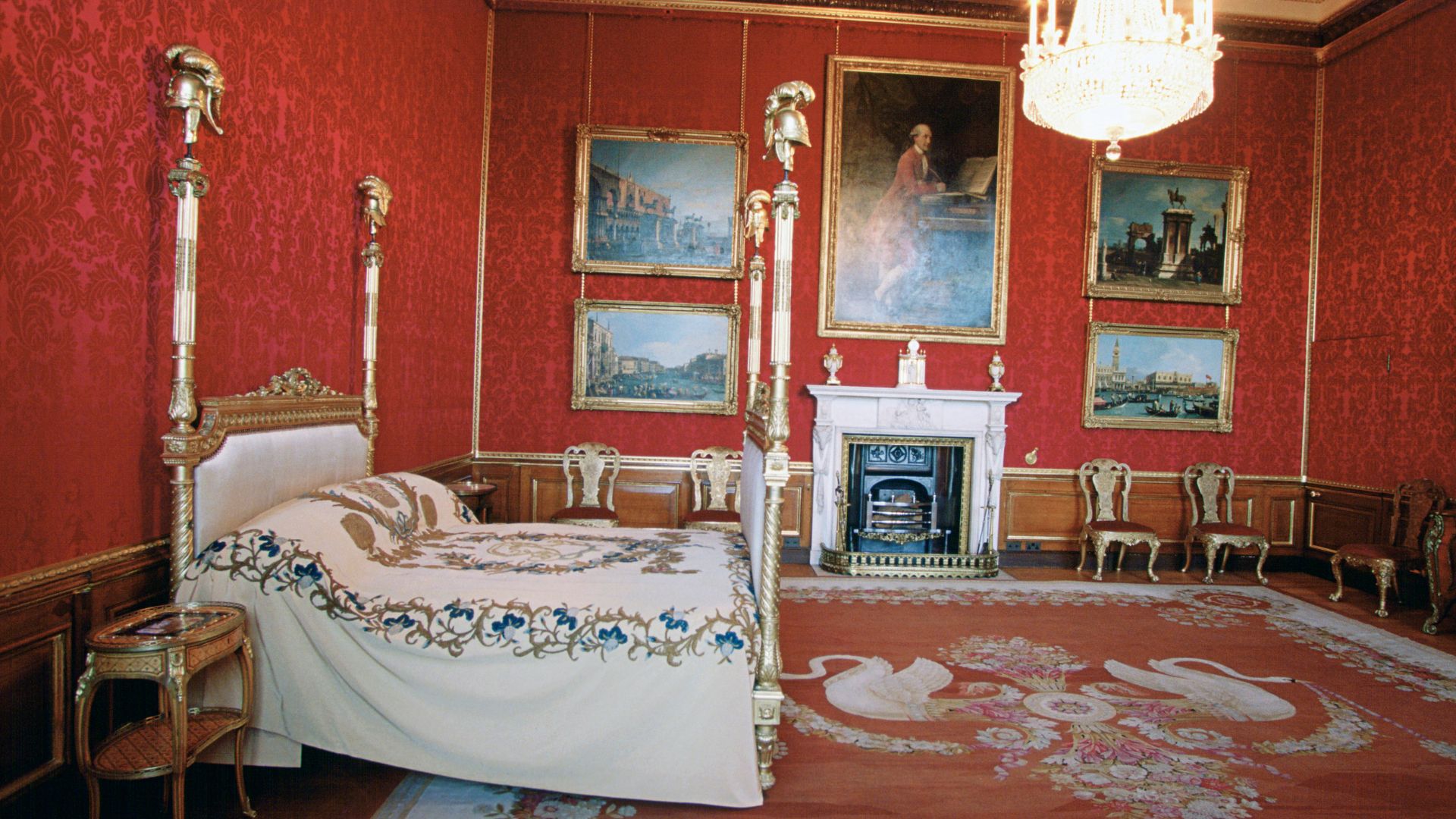
If you've ever dreamt of getting snuggly by a fire, you might want to try and land an invite to Windsor Castle. The sprawling palace has 300 fireplaces.
If 300 fireplaces sounds like a lot to keep track of, bear in mind that each one is cared for by just one person.
Known as the King's fendersmith, the current man with the role took over from his own father in 1984.
The smaller St James’s Palace was once the monarch’s main residence

When Whitehall Palace was destroyed by a fire in 1698, St James’s Palace - which is located just down the road from Buckingham Palace - became the official home of the monarch.
It remained that way for over 100 years, when Queen Victoria moved into Buckingham Palace in 1837.
There are 400 clocks at Windsor

With over 1000 rooms, it might not be a surprise that there are plenty of clocks in Windsor Castle - but over 400 seems excessive.
All of the clocks fall under the care of the royal's horological conservator.
Their job is to maintain the historical integrity of the older timepieces, and they have to go around and keep them at the correct time.
Spare a thought for them during the two busiest weekends - when the clocks go forward and back.
The oldest item at Hampton Court Palace isn’t what you’d expect
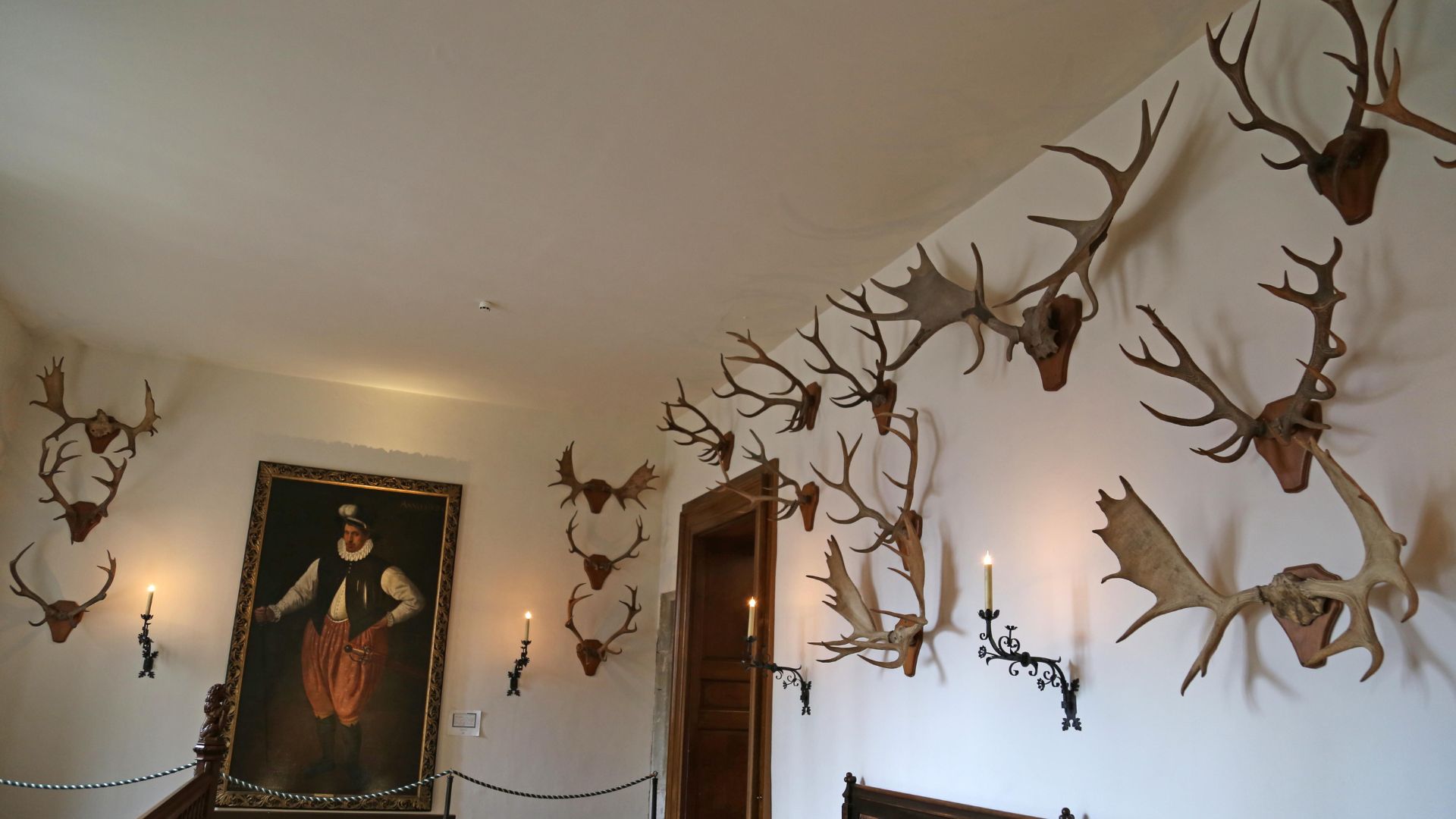
The Horn Room at Hampton Court Palace historically would've been where servants would have waited with food before taking it into the Great Hall.
Today it is where all the antlers and hunting prizes are displayed. As visitors of a tour find out, per Living London History, there's a set of elk antlers that are 15,000-20,000 years old.
A certain type of tree around Buckingham Palace represents a royal failure
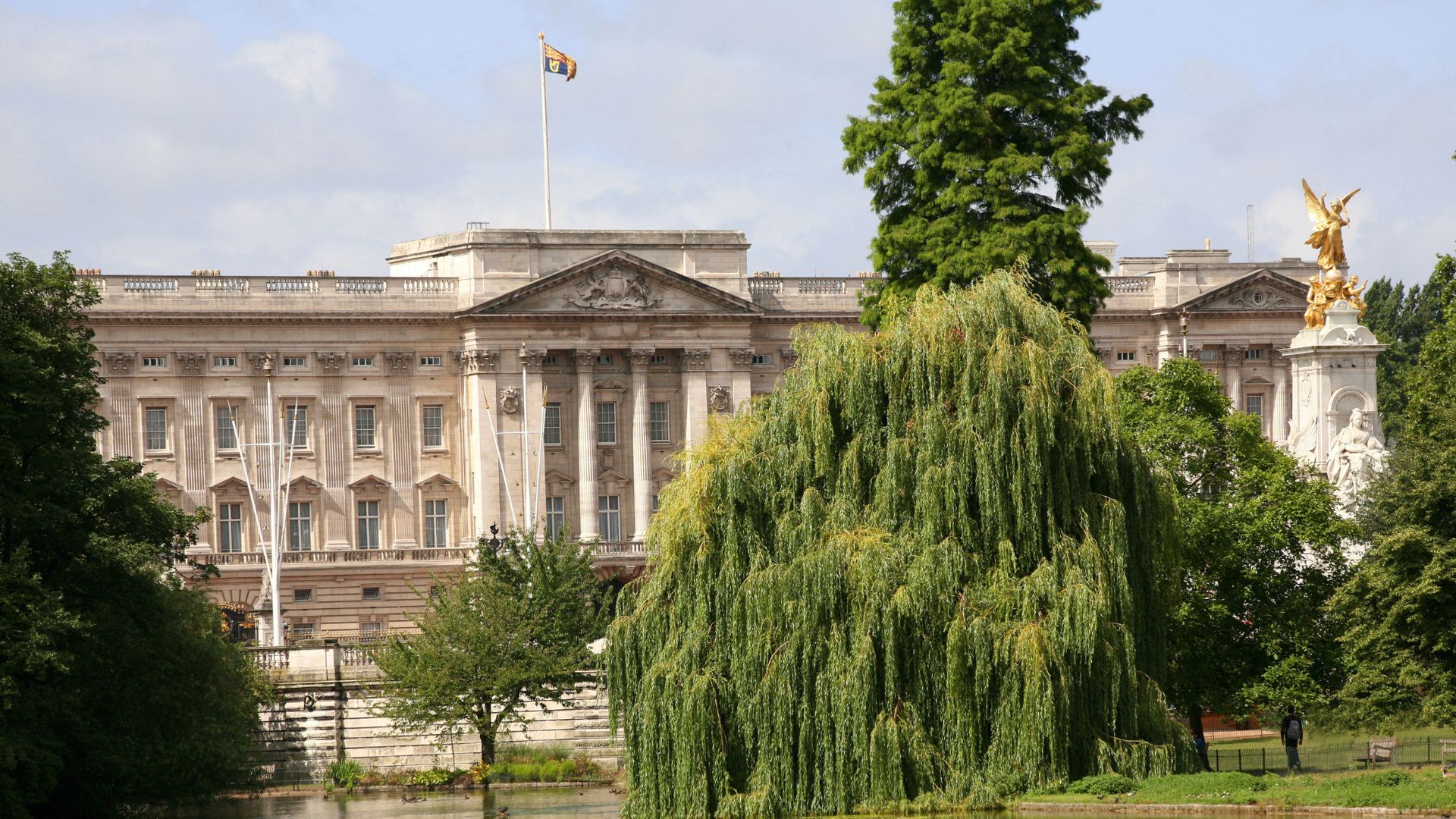
Back when Buckingham Palace didn't look exactly like it does today, King James I had a plan to make England richer. It involved making silk - a popular export at the time - and so he planted hundreds of mulberry trees.
Unfortunately, King James used the wrong kind of mulberry tree. He planted black mulberries, a species that silkworms don't eat. Not a single strand of silk ended up being produced in jolly old England. Poor James.
Sandringham House witnessed history

Sandringham House was the setting for Queen Elizabeth II’s first televised Christmas broadcast.
The broadcast was made live from the Long Library at Sandringham in 1957.
St George’s Chapel - a highlight of Windsor
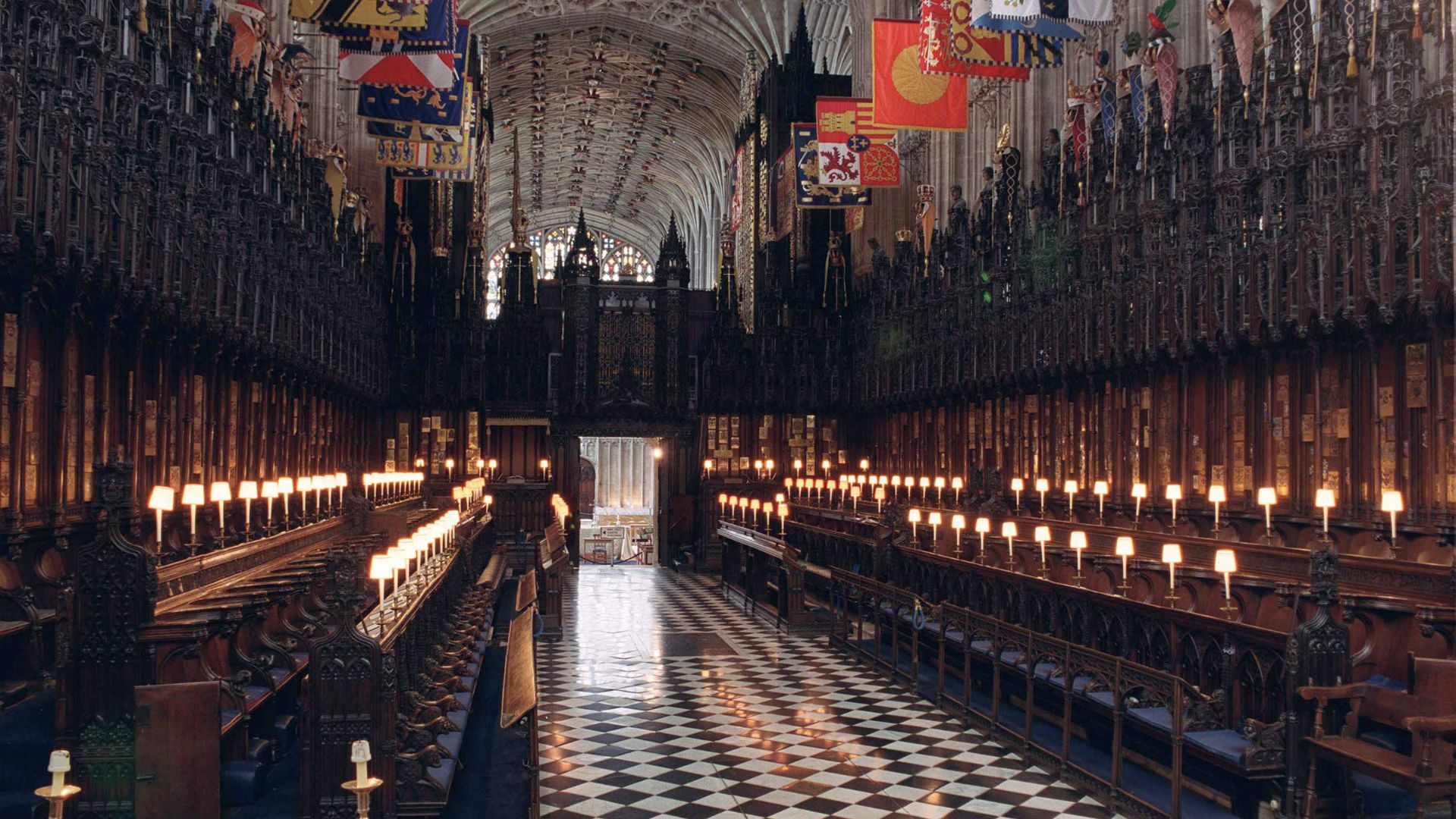
It's witnessed jubilant highs in the form of royal weddings (including Prince Harry and Meghan Markle in 2018) and solemn lows (such as the burial of Queen Elizabeth II). St George's Chapel is a must-see for anyone visiting Windsor Castle.
Hailed as one of the finest displays of Gothic architecture in Britain today, the 800-capacity St George’s Chapel is also the birthplace of the Order of the Garter, the world's oldest order of chivalry.
Watch out for eavesdroppers…

When Henry VIII began working on Hampton Court Palace’s Great Hall in 1533, he wanted to send a message to the courtiers that he was always watching and listening. This is why, if one looks up, they'll see heads and faces carved into the eaves of the roof.
Quite literally, eavesdroppers.
The Tower of London still houses the Crown Jewels

The Tower of London first started construction around 1078, and it's evolved over centuries. And while it has transformed from a prison to a tourist attraction over the years, it is actually still a working fortress that guards the priceless Crown Jewels.
It's reported that the jewels sit behind bombproof glass and are under watch by over 100 hidden cameras at all times.
There’s a hidden doorway in the Buckingham Palace State Room

While Buckingham Palace does open the State Rooms to the public for a limited window each year, there are secrets and rooms that the public will miss.
One such secret can be found in the White Drawing Room, which reportedly has a secret doorway leading to the Queen's private state apartments.
Disguised as a mirror and cabinet and typically concealed from view, it is where the Queen makes her entrance ahead of audiences and small gatherings.
Hampton Court Palace was where literary history happened

The Great Hall at Hampton Court Palace was used for great effect during the 17th century, including hosting William Shakespeare and his company.
Shakespeare's 'King's Men' first performed Hamlet and Macbeth for the new Stuart King, James I in 1603, and A Midsummer's Night's Dream was put on during the Christmas season the following year.
Festivals and performances are still held at Hampton Court Palace to this day.
Telling the time at Hampton Court Palace isn’t always simple

Installed in 1540, an astrological clock still takes pride of place at Hampton Court Palace.
Designed by Nicholas Kratzner, the clock still works, showing the hour, day, month, the number of days since the beginning of the year, the zodiac sign and can even be read (by those who know how) to display the high water mark of the Thames.
A Guinness World Record holder grows in the garden

First planted in 1768 when Lancelot ‘Capability’ Brown was in charge of the gardens, The Great Vine still weaves its way through the gardens of Hampton Court Palace.
In 2005 it was officially given the Guinness World Record for being the largest grape vine in the world.
The Long Walk at Windsor: aptly named

Inspired by the gardens of Versailles, the Long Walk at Windsor Castle is one of the most iconic features of the royal residence.
Stretching for 2.5 miles from the gates of Windsor Castle to the Copper Horse statue at Snow Hill, the walk is steeped in history. To make his vision a reality, Charles II even had to purchase 1,864 young Elm trees.
Visitors taking on The Long Walk get to pass through Deer Park, once part of a vast Norman hunting forest. A place preserving history, there are ancient trees still standing today that would've bore witness to William of Normandy riding past.
Windsor Castle is the largest occupied castle – in the world

Even though Buckingham Palace is bigger in size (828,821 square footage versus Windsor Castle's 484,000 square feet), as a working castle with over 1000 rooms (compared to Buckingham Palace’s 775) Windsor Castle is officially the largest occupied castle. And not just in the United Kingdom, but the world.
(Malbork Castle in Poland is the world's largest castle overall, if you were curious, at over 1.5 million square feet.)

Jack Slater is not the Last Action Hero, but that's what comes up first when you Google him. Preferring a much more sedentary life, Jack gets his thrills by covering news, entertainment, celebrity, film and culture for woman&home, and other digital publications.
Having written for various print and online publications—ranging from national syndicates to niche magazines—Jack has written about nearly everything there is to write about, covering LGBTQ+ news, celebrity features, TV and film scoops, reviewing the latest theatre shows lighting up London’s West End and the most pressing of SEO based stories.
-
 Small acts of kindness to brighten someone's day
Small acts of kindness to brighten someone's dayThese little acts of kindness and thoughtful gestures can truly create a positive impact
By Anna Paul
-
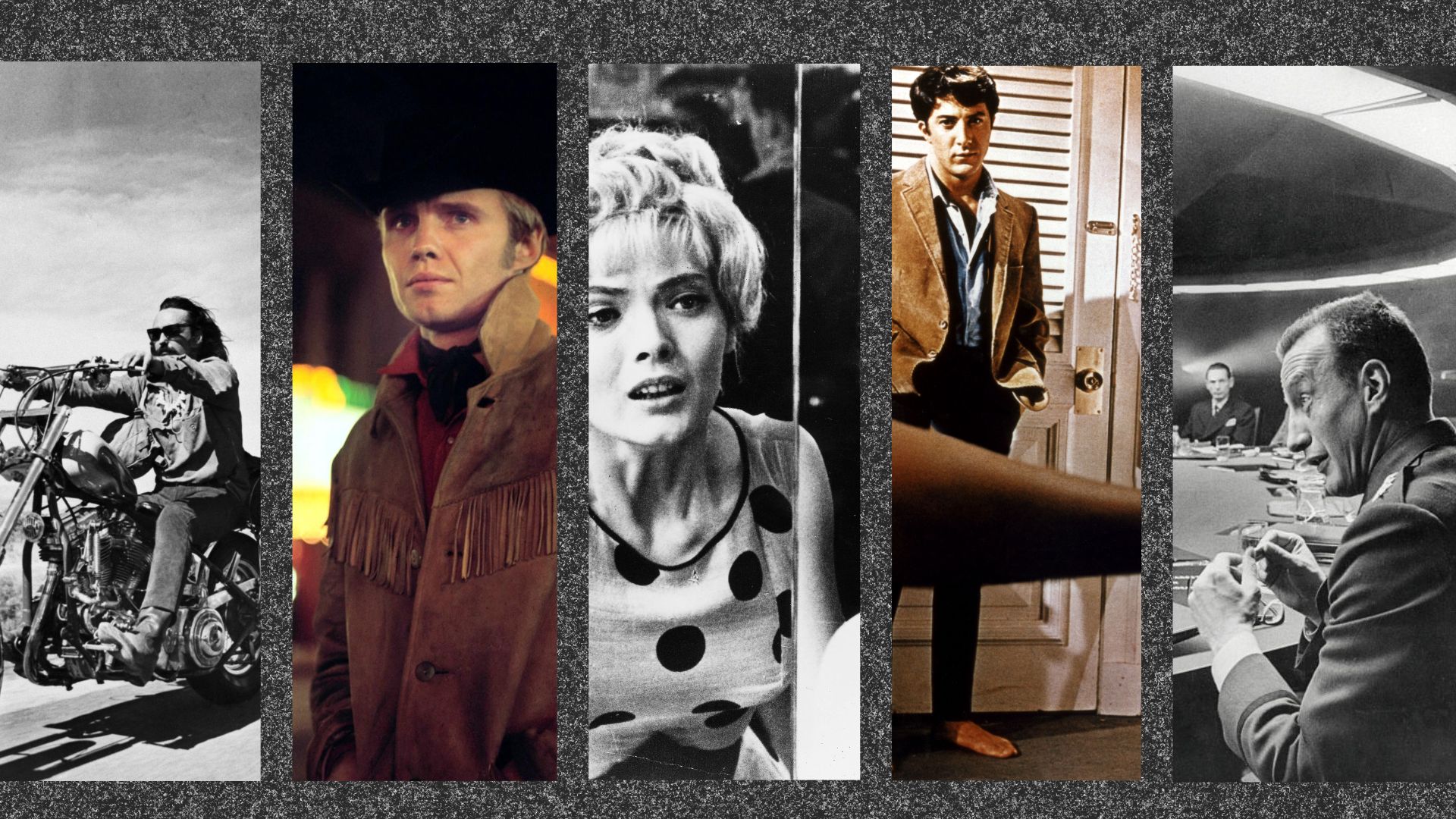 The best films of the 1960s - from New Hollywood greats to experimental new wave flicks
The best films of the 1960s - from New Hollywood greats to experimental new wave flicksWe look back at one of the greatest decades in cinema history
By Anna Paul
-
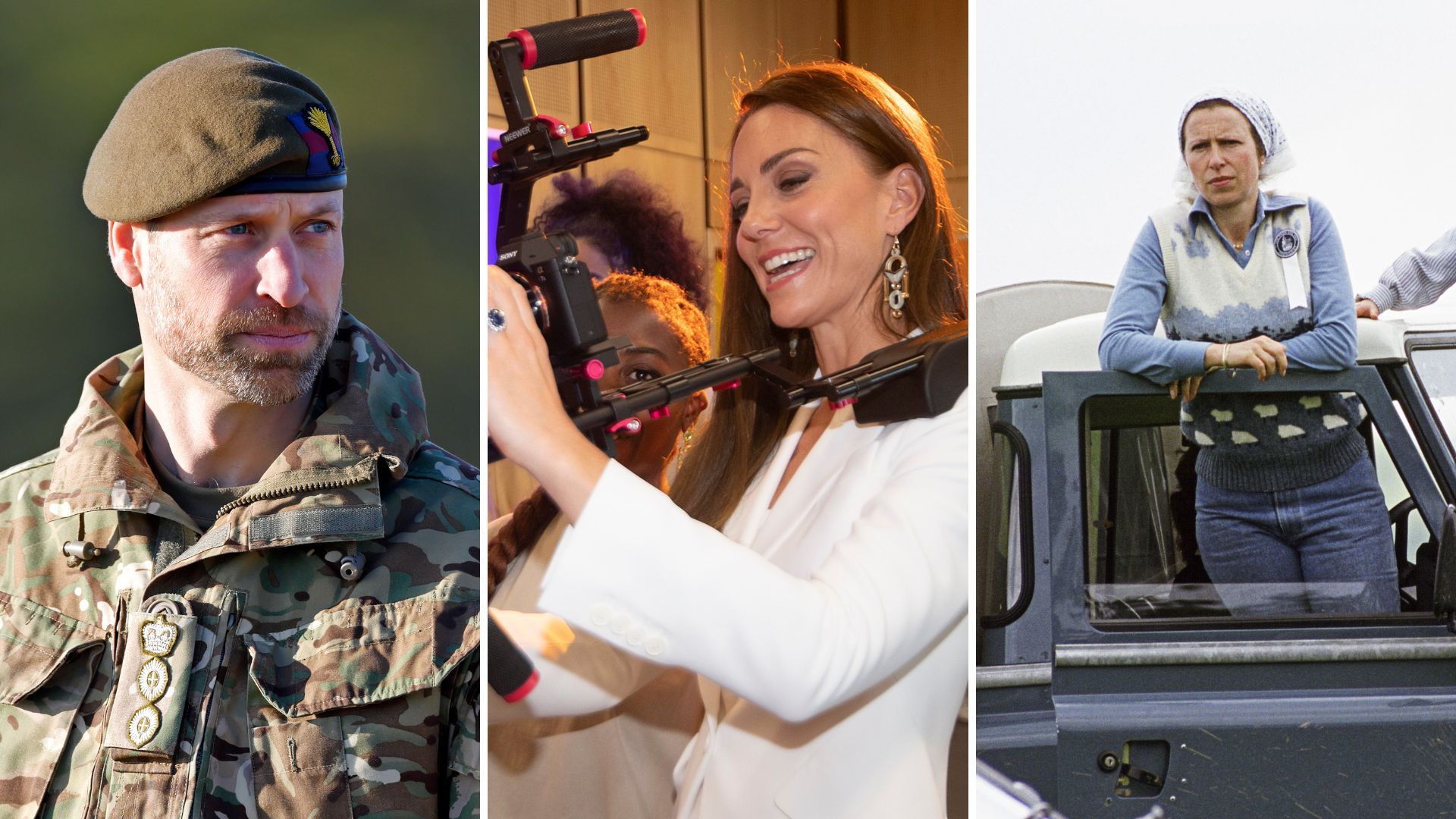 What the Royal Family might have done if they weren't royal - from Princess Anne's farm life to Kate Middleton's pre-marriage careers
What the Royal Family might have done if they weren't royal - from Princess Anne's farm life to Kate Middleton's pre-marriage careersBeing royal can be a full time job - but what if it wasn't? What could the Royal Family have done?
By Jack Slater
-
 The most glamorous state banquet looks worn by the Royal Family and starry guests over the years
The most glamorous state banquet looks worn by the Royal Family and starry guests over the yearsA state banquet is always a good reason for the royals and A-list guests to bring out their best fashion
By Jack Slater
-
 The best 'girl power' quotes and examples of royals being the ultimate feminists
The best 'girl power' quotes and examples of royals being the ultimate feministsYes, royals know how to spread the word of girl power
By Jack Slater
-
 A look at the Royal Family giving back - the charities and patronages with personal and moving connections to the royals
A look at the Royal Family giving back - the charities and patronages with personal and moving connections to the royalsCharity and service is a massive part of the royal way of life, but sometimes a charity has a deeper, more personal connection
By Jack Slater
-
 The most romantic details from royal engagement stories that make us swoon
The most romantic details from royal engagement stories that make us swoonFrom the symbolism behind the rings to the touching reasons behind the location, these royal engagement stories make us believe in romance
By Jack Slater
-
 The places the Royal Family love to eat and drink at, from iconic London bars and hotels to other European hotspots
The places the Royal Family love to eat and drink at, from iconic London bars and hotels to other European hotspotsEver wondered how to dine out like a duchess or party like a princess? You can start by visiting these royal approved hotspots
By Jack Slater
-
 Foods the royals are obsessed with, from the King's eggs of choice to Kate Middleton's go-to pizza
Foods the royals are obsessed with, from the King's eggs of choice to Kate Middleton's go-to pizzaCurious about what the famous family snack on? These are the foods the royals are obsessed with...
By Lauren Clark
-
 The funniest Royal Family one-liners and witty quotes that still make us chuckle
The funniest Royal Family one-liners and witty quotes that still make us chuckleFrom Queen Elizabeth's dry wit to Prince Philip's toe-curling gaffes, the royals know how to keep us laughing
By Jack Slater